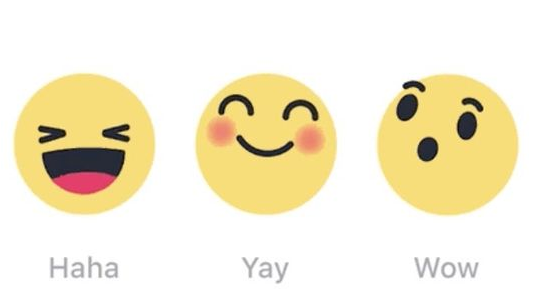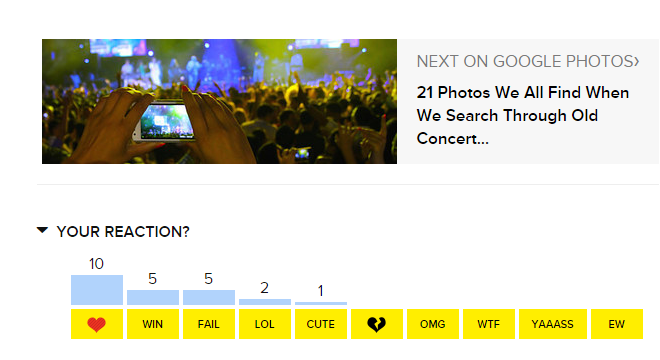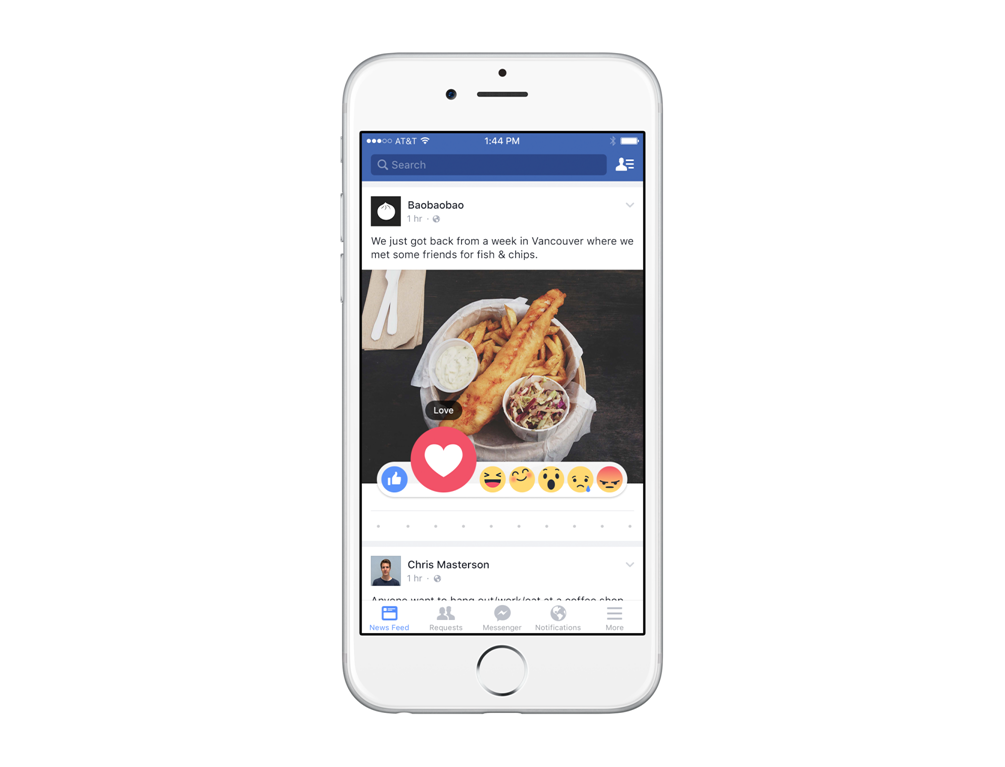More qualified feedback on social posts, or a new way for the disgruntled to attack your brand?
On October 8, Facebook started testing buttons that let users explain how they feel about a post, more precisely than a Like.
Facebook users have been asking for a Dislike button for years. Social media strategists managing Business Pages haven’t been as enthusiastic about the potential for more negativity associated with their brand.
In what’s perhaps an effort to meet all demands, Facebook is combining the desire for something that goes beyond a simple Like, without bringing on too much negativity. It’s “Reactions.”
Here are 4 things to know about the new reaction buttons, with information straight from Facebook’s official statement:
1. It’s an extension of the Like button
Rather than simply liking a post, users will have the ability to share the emotion it invokes: Love, Haha, Wow, Yay, Angry and Sad.

Consider this similar to Buzzfeed’s website, where at the bottom of each article, people share their reaction to an article:

2. It’s going to impact PageRank
In Mark Zuckerberg’s Town Hall last November, he described Facebook’s mission to be “the perfect personalized newspaper for every person in the world.” With this, comes the predicament: is it better to optimize each personal experience or help businesses reach as many people as possible?
Zuckerberg said there are roughly 1,500 stories a day that could appear on the average user’s News Feed, but in reality, only about 100 appear. This means less than 10 percent of what’s being posted will actually appear on a user’s screen.
“Reactions” will be a way to help gauge what people like to see. If someone uses a Reaction, Facebook will “infer they want to see more of that type of post.” (This makes sense when it comes to “haha” or “yay” posts, but we can’t help but question if someone finds something “sad,” whether it means they don’t want to see that sort of post.)
3. It’ll be available for friends, advertisers, publishers and businesses
It appears that Facebook is testing this option as a ‘one-size fits all’ approach, which is different from how the social network has rolled out previous enhancements. For example, GIFs were introduced to personal users in May 2015, but since, Facebook has only given a small number of brand Pages access.
4. They’re being tested currently – but not in the U.S.
Reactions rolled out in Ireland and Spain on Oct. 8. Facebook’s reasoning for a geographically limited beta release? “We’re excited to start this test, but understand that this is a big change, and one that we want to make sure to get right.”
OUR reaction: How “Reaction” buttons can benefit marketers
When word got around about a “Dislike” button on Facebook, we’ll admit our strategists weren’t thrilled about the implications it could have for clients. However, since learning about what “Reactions” actually entail – they’re looking forward to the opportunity to better understand their audiences.
“There’s no need to panic just yet,” Senior Social Media Strategist Bob McHugh said. “Fortunately, all of the featured Reactions appeal to emotional responses and not critical assessments. There’s no “this sucks” or “boring” emoji that makes it seductively easy to dismiss a company’s output. In my opinion, any feature that allows a user to engage and communicate with a brand in new ways is a good thing.”
Facebook reminded apprehensive marketers that this is an opportunity to understand what your audience truly wants to see.
“We see this as an opportunity for businesses and publishers to better understand how people are responding to their content on Facebook. During this test, Page owners will be able to see Reactions to all of their posts on Page insights. Reactions will have the same impact on ad delivery as Likes do.”





